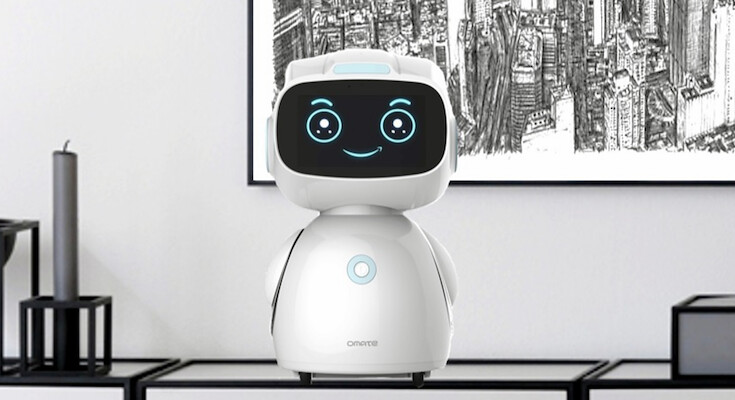Small Home Robot, Omates Yumi.
The article is both a presentation of the small home robot, Omate’s Yumi and an analysis of if you should get one. So, Yumi’s capabilities are basically same as the smartphone s’ except that it has a very high quality screen and speaks ; it also shares capabilities of Echo Dot to be always ambiently awake and responsive to your voice. It’s actually just like the first personal computer “that came straight out of the box with pre-loaded software”. (Athique, ch 1, pp11)
Source: start robot
Source: hondamarlboro
Problem in the article I would say is answering a question: should we get the Yumi? And argument that authors makes here is that no, it is nothing special, just a smartphone inside a cute body that can run Alexa and that we should get a more serious robot like the ASUS Zenbo.
Source: Charles Goodell
As for the evidence author talks about the Yumi’s hardware capabilities (what the robot body can do) that they are extremely limited. It will bump into things and can fall off a table. All it’s body is good for is turning slightly to face you. It’s just smartphone in a cute gigantic case.
To analyze the evidence the author uses comparisons to other products that have similar capabilities. For what’s missing in the article would be that the author could have included pictures and/or descriptions of the products he compared the Yumi to.
So how is this New Media? How does this product satisfies the New Media’s five key principles?
In my opinion it is definitely New Media and it definitely has all five principles. Here is why:
-
Numerical Representation – Yumi processes a large amount of computer data stored in binary code for a potentially infinite number of programs and apps that include many types of media.
-
Modularity – all the apps it can run can be downloaded, deleted, or replaced, without changing anything about the Yumi or the app – they are independent.
-
Automation – it has all the normal automated processes of a smartphone, and the extra automation of both Alexa (which is software) and the capabilities of the Echo Dot to stay awake and hear your voice (which is hardware).
-
Variability – each Yumi has a copy of the Alexa program that becomes a customized version that “knows” the voice of its owner.
-
Transcoding – “While from one point of view, computerized media still displays structural organization that makes sense to its human users — images feature recognizable objects; text files consist of grammatical sentences; virtual spaces are defined along the familiar Cartesian coordinate system: and son on — from another point of view, its structure now follows the established conventions of the computer’s organization data. (Manovich, pp 45)
Because Yumi has a face and voice it’s more extreme transcoding. We know that transcoding includes computer layer and cultural layer which depend on each other.
– Computer Layer – Yumi has the ability to store, sort, and retrieve data and run programs. Also the Alexa software.
– Cultural Layer– Yumi uses face and body, Alexa’s voice, and the way she speaks English and understands it (instead of in binary code). Also it should have the screen and GUI (Graphical User Interface).
Questions:
1. Are you interested in home robots?
2. Which one would you prefer Yumi or Zenbo?


